I used to wait for permission—for an editor to greenlight a story, for my family to support my writing about my queer lived experience. However, as I've grown up, I've found that I can give myself permission. Sure, I write for other publications once in a while, but I created this place to be my dream publication. I get to explore topics in queer history that I find vitally important, spotlight LGBTQ+ artists who deserve to be heard, and showcase the work of other amazing queer writers. It's a place I'm proud of that I've given myself permission to create.
The truth is that my experience with visual art has been similar. For so long, I felt weird sharing my visual work—whether that be journal art, knitting, or something else. I've always been someone who feels things incredibly deeply, but I'm also someone who doesn't know what to do with those feelings. If I'm not careful, those feelings consume me from the inside out, and creating, in general, has been an outlet where I can make sense of my thoughts and feelings. Knitting has become one of my favorite creative mediums. Earlier in the year, as my dad's decline on hospice care reached its end, I knew I needed a project to help distract me and keep me grounded. I had a vision for a virtual knit art installation. Once again, I realized that I could give myself permission to pursue the project and share it with the world, and so that's what I'm doing today.
I adore history, visual art, and knitting. I decided to blend these loves in a virtual art exhibit titled Wool Canvas. I hope you enjoy it!
About the piece: This piece is the cover of Andrea Zanatelli’s book “Love Is Enough.” Since stumbling upon Zanatelli’s work a few years ago on Instagram, I’ve been enthralled ever since. His digital collages often feature hearts and flowers, and I’m in awe of each piece—I am especially inspired by his ‘embroidery series,’ which isn’t actual embroidery but rather the most intricate collage art I have ever seen. He’s genuinely one of the modern-day artists whose work I am most excited by.
About my process: My goal with this project was to utilize a range of knitting styles, types of yarn, and pieces. For this first piece, I decided to use DK weight yarn, as it’s lighter, and I used slightly smaller needles as a way to add more details. I decided to knit this heart on a sweater vest, and I knit primarily using intarsia before adding the details of the words and the white outline around the heart with duplicate stitching. Since I designed both the heart pattern and the sweater vest pattern entirely on my own, it allowed for creative freedom as I decided to add a shorter v-neck collar than I have used on many of my previous projects.
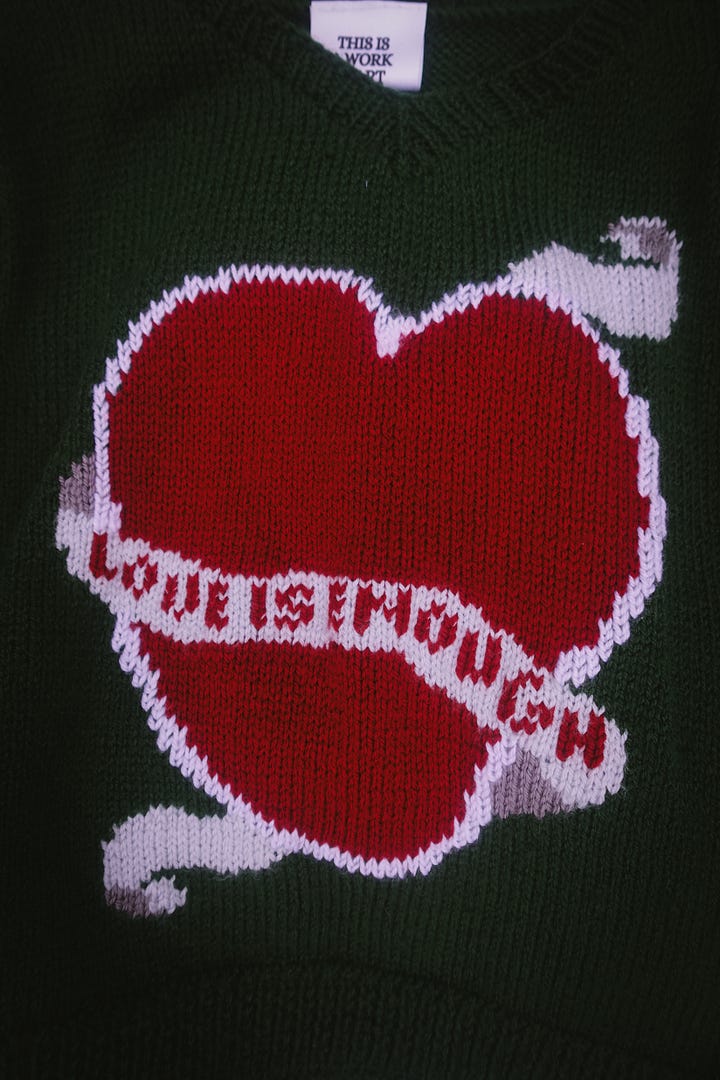
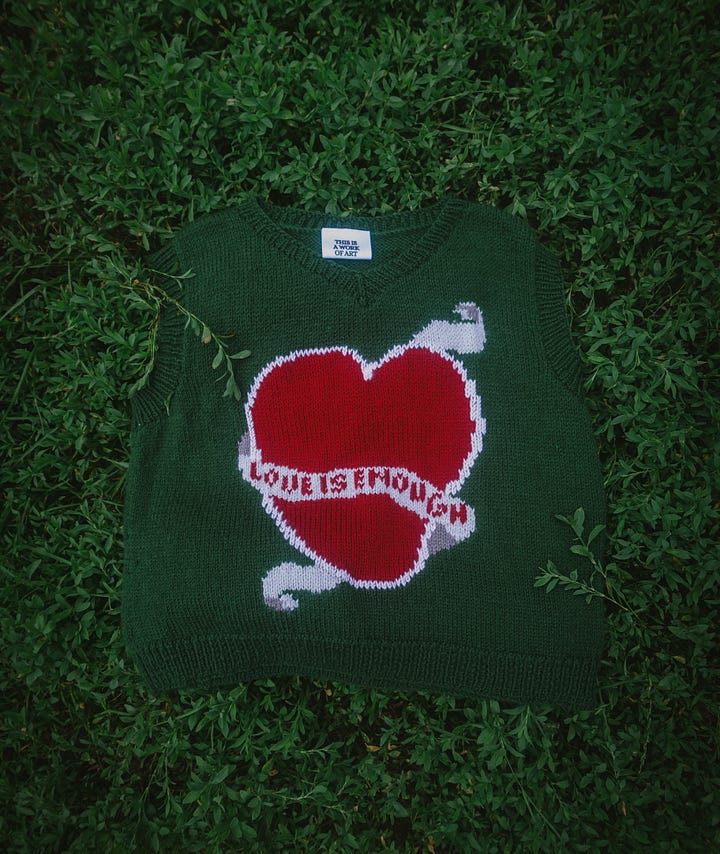
About the piece: This piece, "Color Study Squares with Concentric Circles," is by Wassily Kandinsky in 1913. Kandinsky was a pioneer of abstraction as we now know it. What's fascinating when looking at his work is knowing he associated music and color together. He once said, "The sound of colors is so definite that it would be hard to find anyone who would express bright yellow with bass notes or dark lake with treble."
About my process: As I studied this piece, I realized I wanted to showcase the details and the specific colors that Kandinsky chose, so I decided to focus on just one of the many color circles. I loved how the first piece turned out, so I decided to use the same type of yarn and the same needles. However, for this project, I wanted to knit a full-length sweater rather than a sweater vest. This project was knit almost exclusively using intarsia, which is quickly becoming one of my go-to methods with color work.
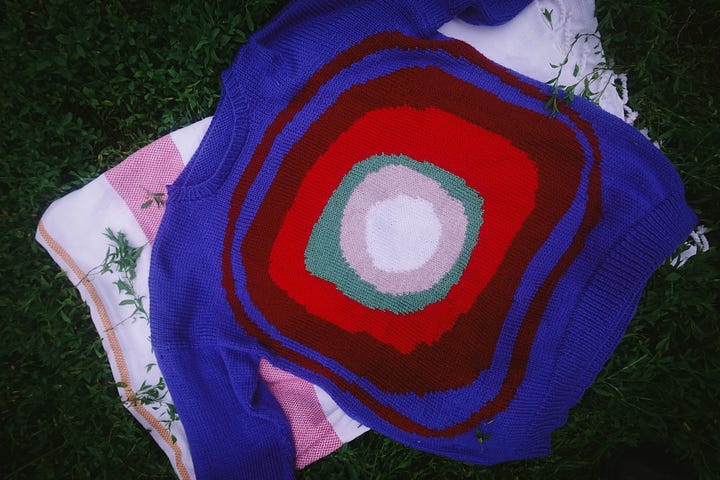
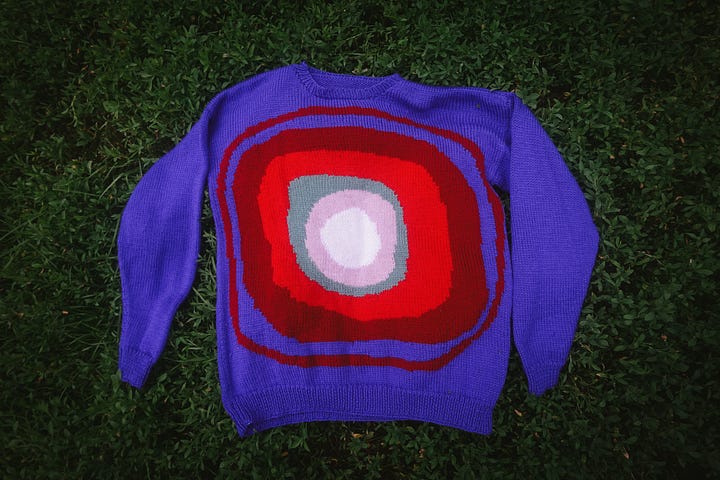
About the piece: This piece is by John James Audubon; this is his version of a Scarlet Tanager from his book “Birds of America.” As a bird lover myself, I have always been fascinated by Audubon’s work and the mark he’s left on the world of ornithology and bird watching.
About my process: This was the first piece I created after my dad's passing, and I actually had an entirely different piece in mind at first. However, the inspiration struck as my mom began going through my dad's belongings; she found the prothonotary warbler that I had knit for him as a Father's Day gift the year before. She had asked if I wanted it back, and that's when I decided that the best thing would be for her to keep it, and I would knit her a favorite bird as a Mother's Day gift to go along with it. My dad is the reason that I love birds, and so it felt fitting for my first project after his funeral to be my mom's favorite bird.
I knit using fingering yarn and the smallest needles that I could find. This allowed me to create an incredibly detailed piece that was still small enough to ship to my mom in Michigan easily. I also knit using a mix of intarsia and stranded knitting.
About the piece: I debated including a second Andrea Zanatelli piece in this project, but the truth is that he’s one of the artists I am most excited about currently, and this piece, in particular, has been one of my favorites since I first saw it. This work is beautiful, and it also conveys such powerful emotion that I knew I needed to create a larger wall hanging inspired by it.
About my process: This is the piece that, by far, took me the longest to create; I would estimate somewhere between 50-75 hours in total went into it. To make the design my own I decided to add the lyrics, "To ache is to be alive," at the top of the work. These words are from Erin LeCount's 'I Am Digital, I Am Divine,' a song that's been very impactful to me, and they're lyrics that felt like they embodied this work.
I was very happy with how the scarlet tanager turned out, so even though this project was larger, I decided to use the same weight yarn and the same size needles. For this project, I used a combination of intarsia and stranded knitting, and I added some finer details using a duplicate stitch.
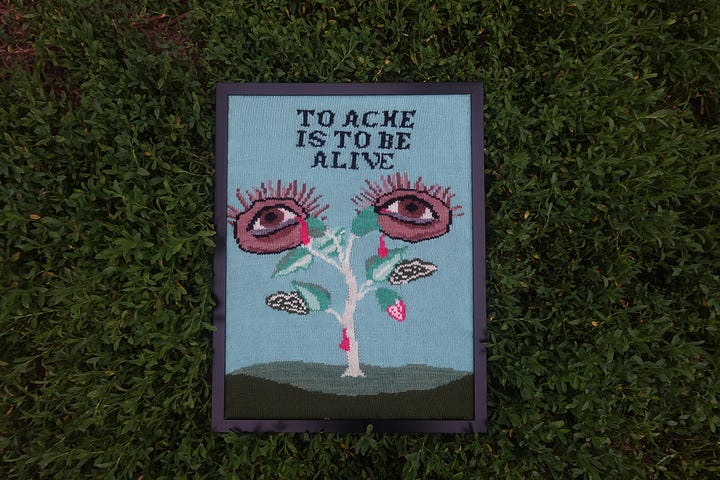
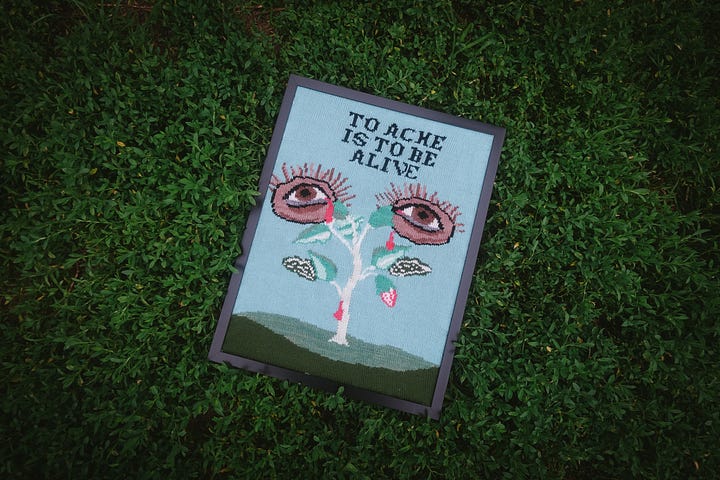
About the piece: This piece is from Florence Welch’s book, “Useless Magic.” Florence + The Machine has long been a favorite artist of mine, and I’ve drawn so much inspiration from them. Specifically, the era when “Useless Magic” and the album “High As Hope” were released had a profound effect on me. At that time, I knew I wanted to write about my queerness, and I wanted to be vulnerable in my public writing, but I was paralyzed by the fear of judgment as well as homophobia that I was experiencing at the time. Seeing an artist so vulnerably share her struggles in music, poetry, and art on a worldwide scale showed me that I could be vulnerable in my work as well. Even though it took years to reach a point where I was brave enough to share myself with the world in that way, I credit a lot of the initial confidence to that book and album, and it will always hold a special place in my heart.
About my process: I used larger yarn and larger needles for this sweater vest to give it a chunkier and cozier feel. I knit the entire design in intarsia, every detail was knit in red, and then I added the leaves and the orange of the fire using duplicate stitching after completing the basic design.
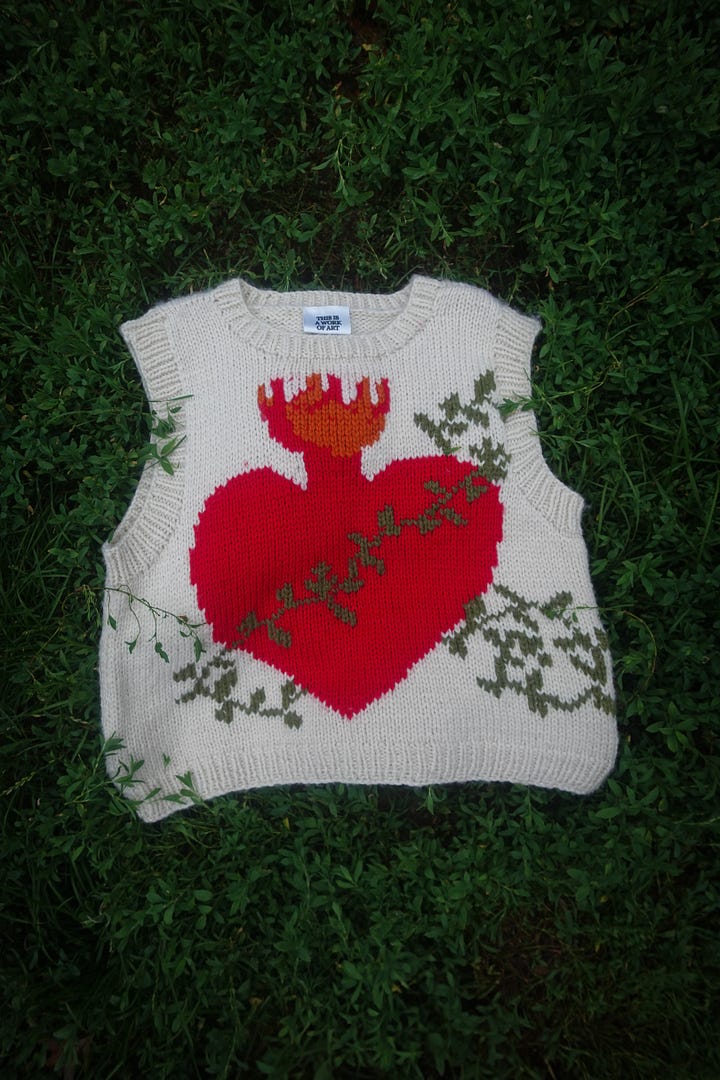
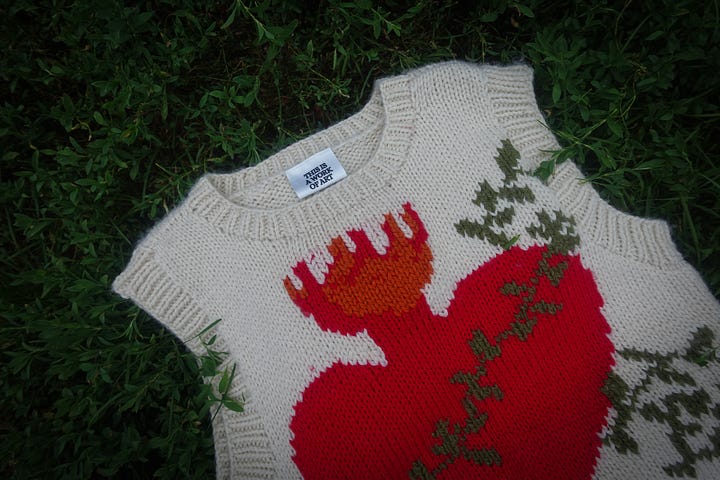
Final thoughts: I am so grateful for this project—knitting is something that is a passion of mine, and given the timing of my father's death, knitting functioned as a healthy distraction from everything else going on. If you're interested in checking out any of my patterns or inquiring about commissions, please visit my knitting website here.
Additionally, some of the artists featured in this project are deceased. However, others are still alive, and I would love to gift them the piece (s) inspired by their work, if possible. If you are one of the artists reading this or if you know them and could help find a way to pass these pieces along, that would be lovely.




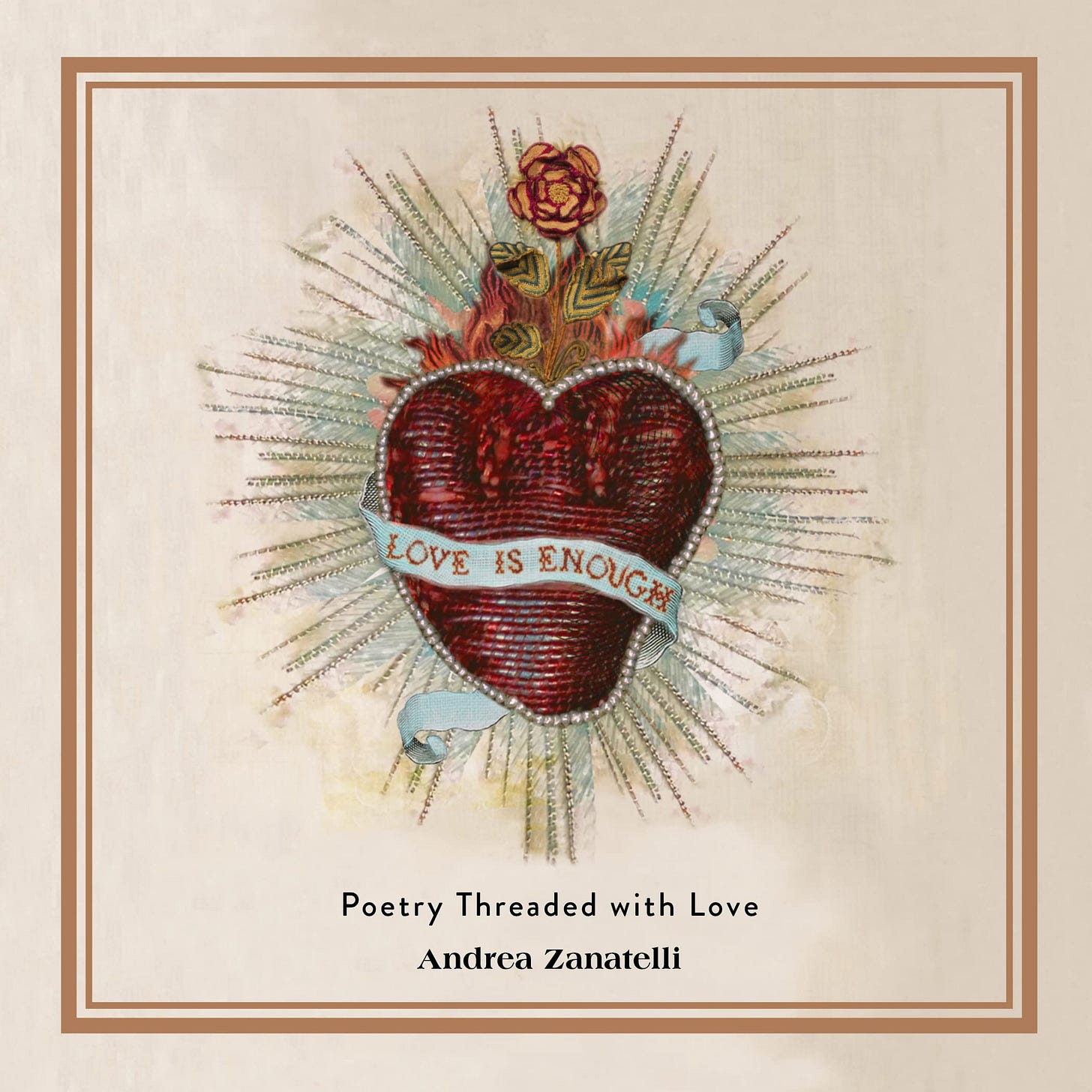
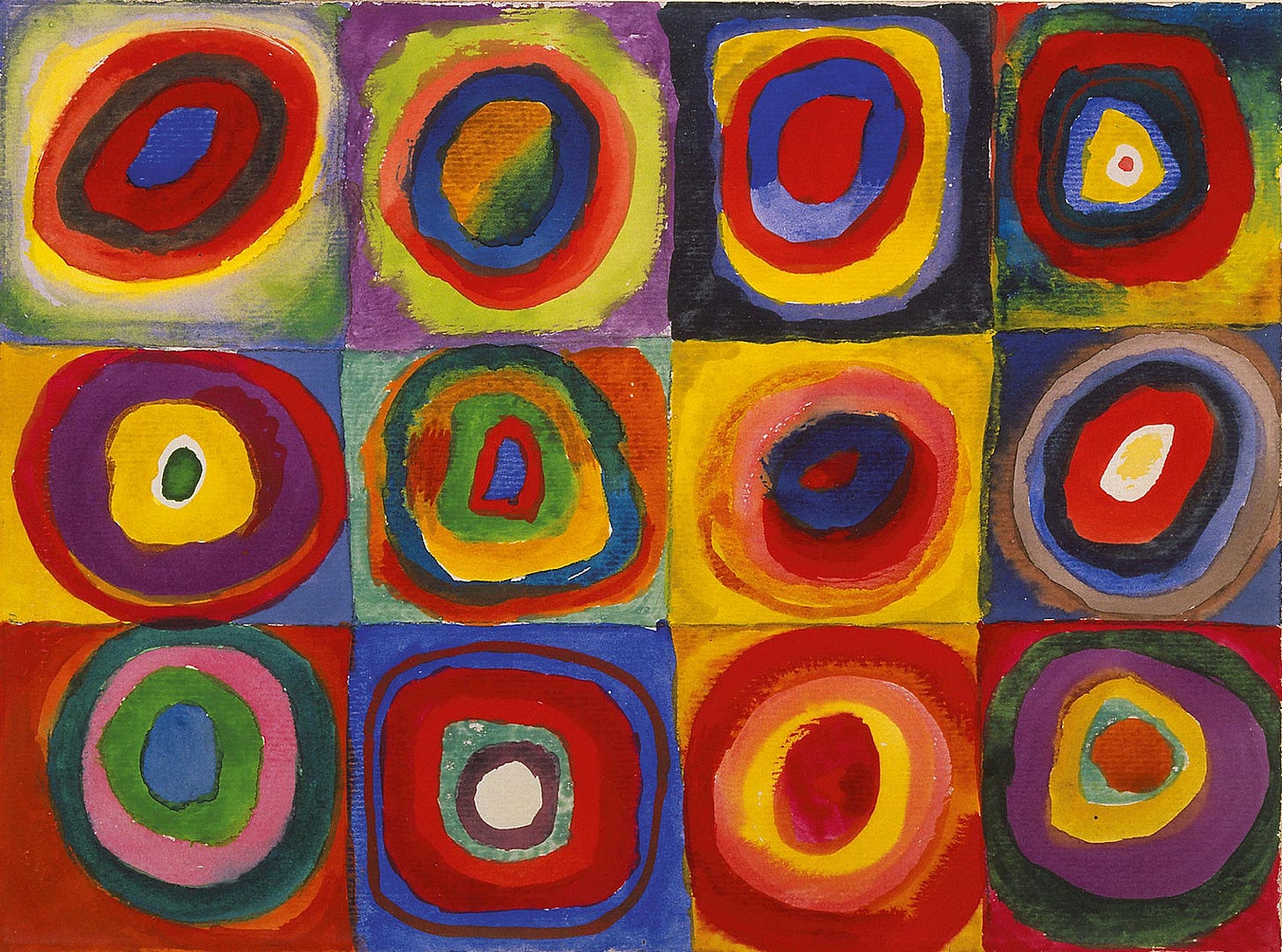
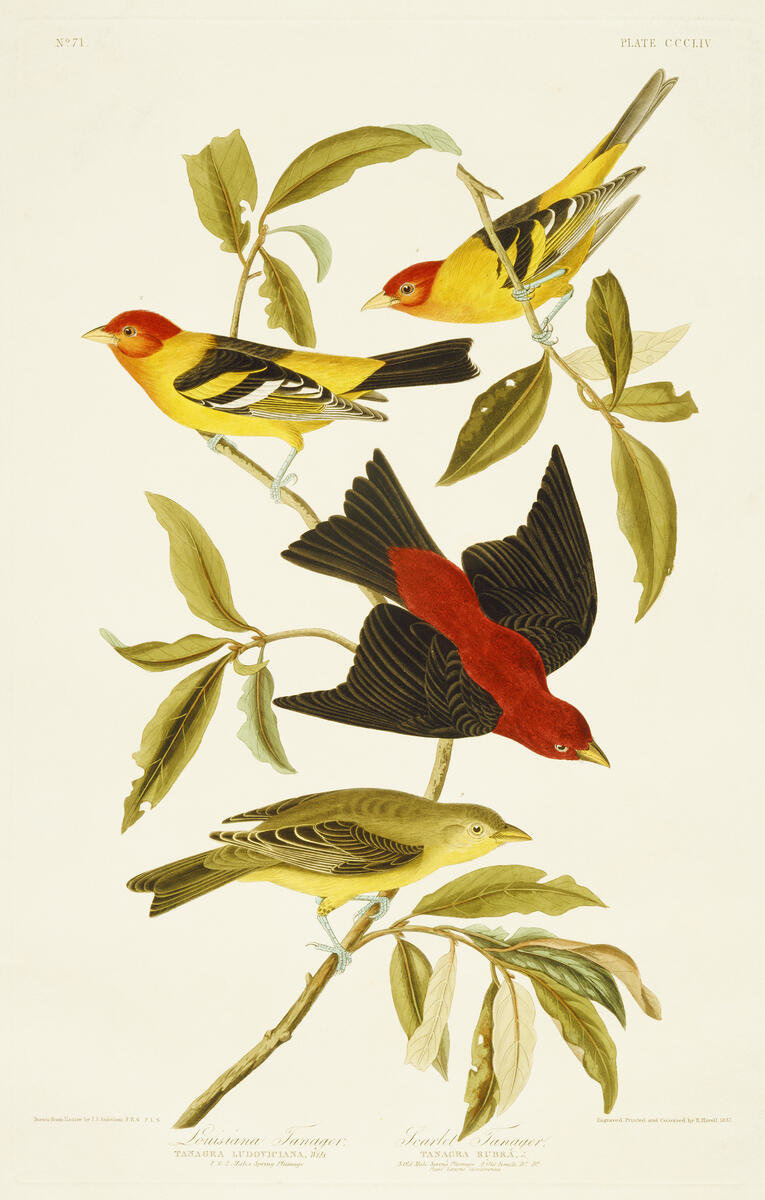
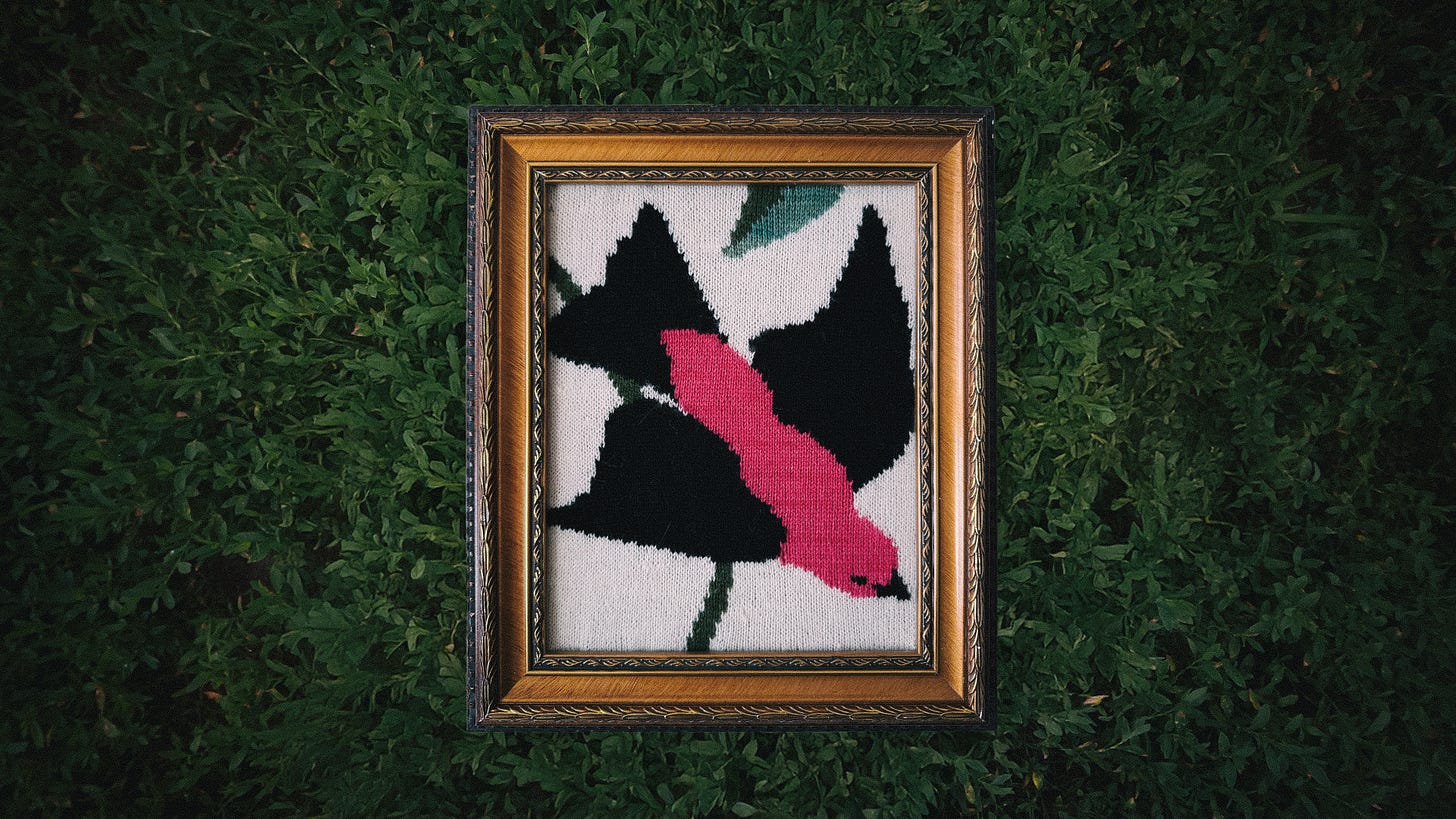
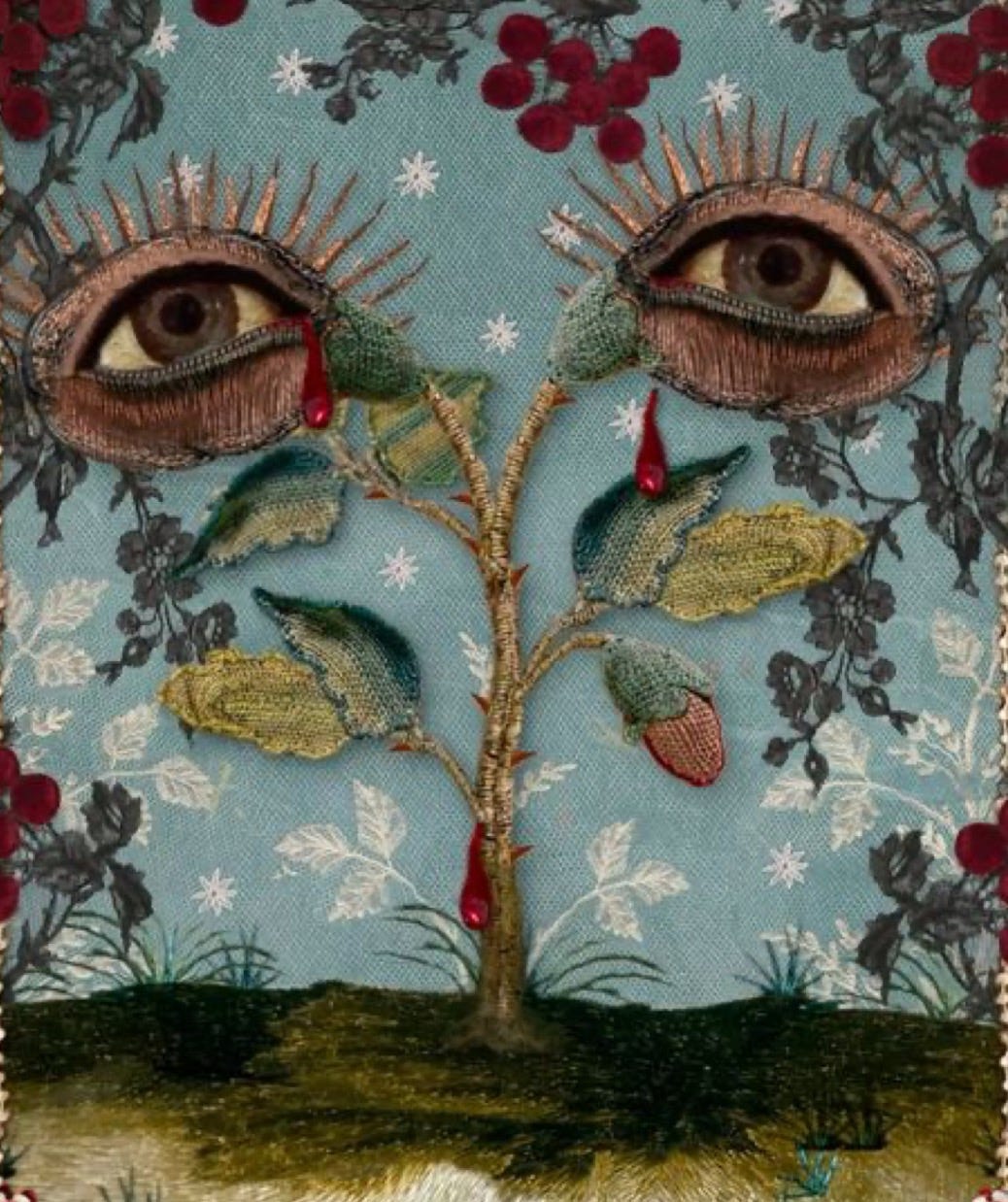

These are so beautiful Rebecca. I love the inspiration you drew from and oftentimes it does feel like the process is just as crucial the product
All these pieces are so beautiful!